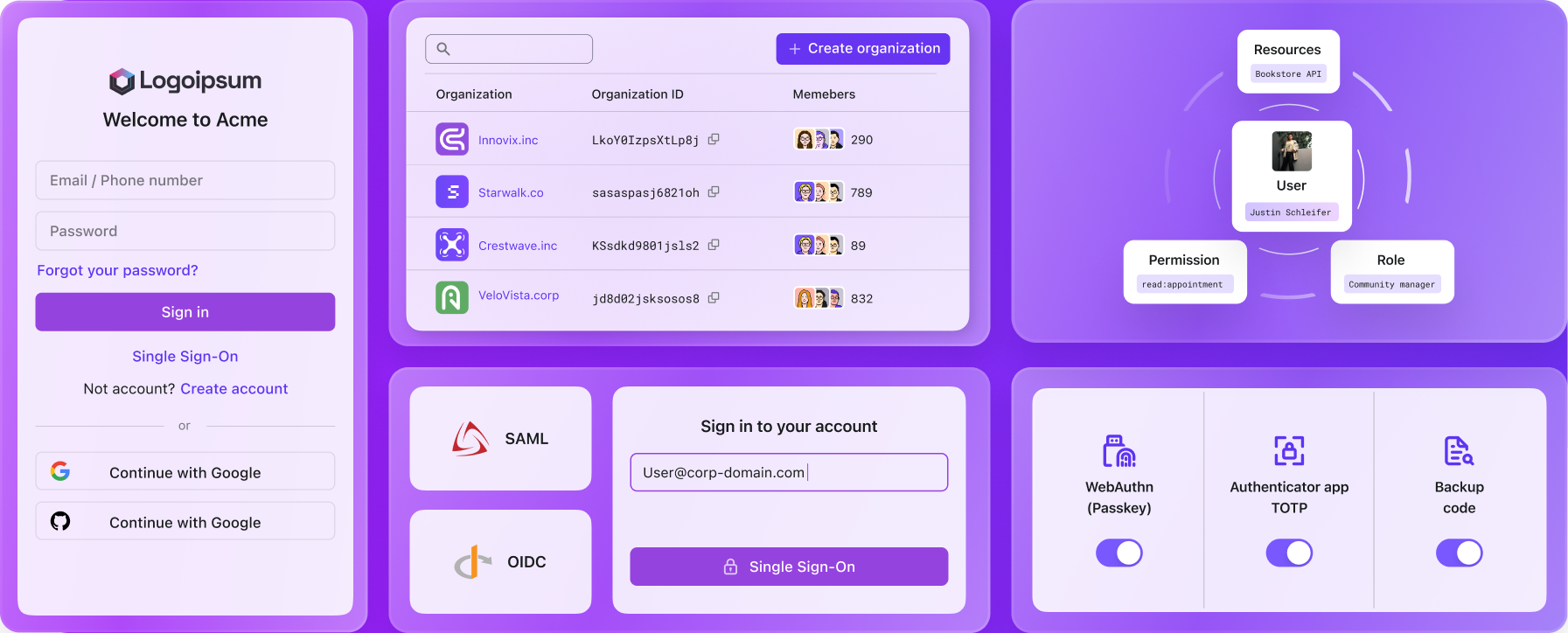IAM security: from fundamentals to advanced protection (Best practices 2025)
Master IAM security threats, essential features, and modern best practices. Discover how Logto’s developer-first IAM platform implements secure authN and authZ.
Exploitation of vulnerabilities as an initial access point grew by 34% than last year (Verizon DBIR 2025) and the average cost of a data breach exceeding $4.5 million, Identity and Access Management (IAM) is no longer optional—it’s a critical foundation for application security. For developers building modern apps, IAM serves as the first line of defense against unauthorized access, data leaks, and compliance failures.
This guide breaks down IAM security fundamentals, the most pressing threats, and actionable best practices for 2025, with Logto’s developer-first IAM platform as your implementation blueprint. Whether you’re securing customer sign-ins, enterprise tools, machine-to-machine APIs, or AI agents, robust IAM solution ensures both security and user experiences.
What is IAM?
Identity and Access Management (IAM) governs digital identities and their permissions across systems, ensuring the right users (or services) access the right resources at the right time. At its core, IAM consists of three pillars:
- Authentication (AuthN): Verifying "who you are" (e.g., passwords, biometrics, SSO).
- Authorization (AuthZ): Controlling "what you can access" (e.g., role-based access control, API scopes).
- User Management: Orchestrating identity lifecycles (onboarding, role changes, offboarding).
Why it matters: IAM minimizes attack surfaces by replacing weak, fragmented access controls with centralized, policy-driven security—without sacrificing usability.
Top 10 IAM threats every developer must mitigate
- Credential stuffing: Bots exploit reused passwords from past breaches.
- Phishing & social engineering: Fake login portals bypass MFA via user manipulation.
- Insecure APIs: Broken Object-Level Authorization (BOLA) exposes sensitive data.
- Privilege escalation: Misconfigured RBAC/ABAC policies grant excessive access.
- Session hijacking: Stolen cookies or tokens hijack authenticated sessions.
- Shadow IT: Employees use unapproved SaaS apps, bypassing SSO controls.
- Insider threats: Malicious or compromised employees abuse legitimate access.
- Weak default credentials: Unchanged factory passwords (e.g., IoT devices).
- Token leakage: Hardcoded API keys in client-side code or logs.
- DoS attacks on auth systems: Flooded login pages disrupt legitimate access.
40% of data breaches involved data stored across multiple environments(IBM Security). Mitigate these by adopting zero-trust principles and modern IAM tools like Logto.
What is IAM security?
IAM security integrates policies, technology, and processes to:
- Protect credentials from theft (e.g., phishing-resistant MFA).
- Enforce least-privilege access (limit users to only what they need).
- Detect anomalies in real-time (e.g., impossible travel logins).
- Automate compliance for GDPR, SOC2, HIPAA, and more.
Modern IAM shifts from perimeter-based security (firewalls) to identity-centric zero trust, where every access request is verified—every time.
IAM security features: The technical checklist
1. Authentication: Identity verification reinvented
A robust auth system supports diverse sign-in methods tailored to user scenarios:
| Scenario | Auth Method |
|---|---|
| Customer logins | Password, Passwordless (Email/SMS OTP), Social |
| Enterprise clients | Enterprise SSO (SAML/OIDC) |
| Service-to-service | M2M apps, API keys |
| End-user API access | Personal Access Tokens (PATs) |
| Support teams | Impersonation mode |
| Third-party apps | OAuth authorization with consent screens |
| CLI/TV/limited-input | OAuth device flow |
Key features:
- Federated auth via OpenID Connect (OIDC) for multi-app ecosystems.
- Secure token storage/retrieval for automated workflows and AI agents.
2. Authorization: Fine-grained access control
Once authenticated, users/apps should never have unrestricted access. Implement:
- RBAC: Team-based permission groups (e.g., "Admin," "Viewer").
- ABAC: Policy-as-Code (e.g.,
department=finance AND device=managed). - Resource scoping: Tenant isolation with organization features, Personal access token expiry, third-party app consent dialogs.
Learn more about authorization features.
3. Advanced protections: Beyond the basics
Balance security and usability with these critical safeguards:
| Protection | Implementation |
|---|---|
| Phishing-resistant logins | Passkeys (WebAuthn by FIDO2) |
| Authentication protection | MFA (TOTP, Backup codes), Step-up verification |
| Credential security | Enhanced password policies |
| Bot defense | CAPTCHA (e.g., reCAPTCHA, Cloudflare Turnstile) |
| Brute-force prevention | Identifier lockout after multiple sign-in attempts |
| Data privacy | Hide account existence during auth |
| Account integrity | Block disposable emails, subaddress, specific email domain, suspicious IPs |
| Cryptographic hygiene | Regular signing key rotation |
| Session security | OIDC back-channel logout |
| CSRF prevention | OIDC state checks + PKCE + CORS |
| DoS mitigation | Firewalls, elastic compute resources |
4. User management & monitoring
Proactively address risks with:
- Audit logs for anomaly detection.
- Webhook alerts for suspicious activity.
- Manual suspensions for high-risk accounts.
IAM security best practices with Logto
We’re thrilled to announce Logto’s new “Security” module, designed to oversimplified IAM implementation without compromising protection.
Logto covers across the IAM stack as mentioned above: from authentication, authorization, user management, and advanced protections.
Whether you choose Logto Cloud (Fully managed, SOC2-compliant service) or Logto Open Source (Self-hosted flexibility), you can quickly and securely set up your IAM system—helping your business go to market faster and start generating revenue.
For Logto Cloud users:
- Use the Dev tenant for free to explore and test all features.
- The Prod tenant offers highly competitive pricing:
- Free plan includes essential security features such as:
- Passwordless authentication
- Foundational security tools: enhanced password policies, invitation-only sign-up, step-up verification, signing key rotation, OIDC back-channel logout, CSRF protection, DoS protection, and more.
- Pro plan starts at $16/month with a flexible, pay-as-you-need model:
- Base features: API protection, RBAC, third-party app authorization, and more.
-
- $48 for advanced MFA (Passkey, TOTP, backup codes)
-
- $48 to enable Organizations for multi-tenant isolation
-
- $48 for the full Advanced Security bundle, including CAPTCHA, email blocklist, sign-in lockout, and more.
- Free plan includes essential security features such as:
Conclusion
IAM security shouldn’t slow innovation. With Logto’s developer-first platform and prebuilt security features, you can deploy enterprise-grade IAM in days—not months. Stop wrestling with legacy auth systems; start preventing breaches where they begin.
Ready to secure your app? Get Started with Logto for Free.

